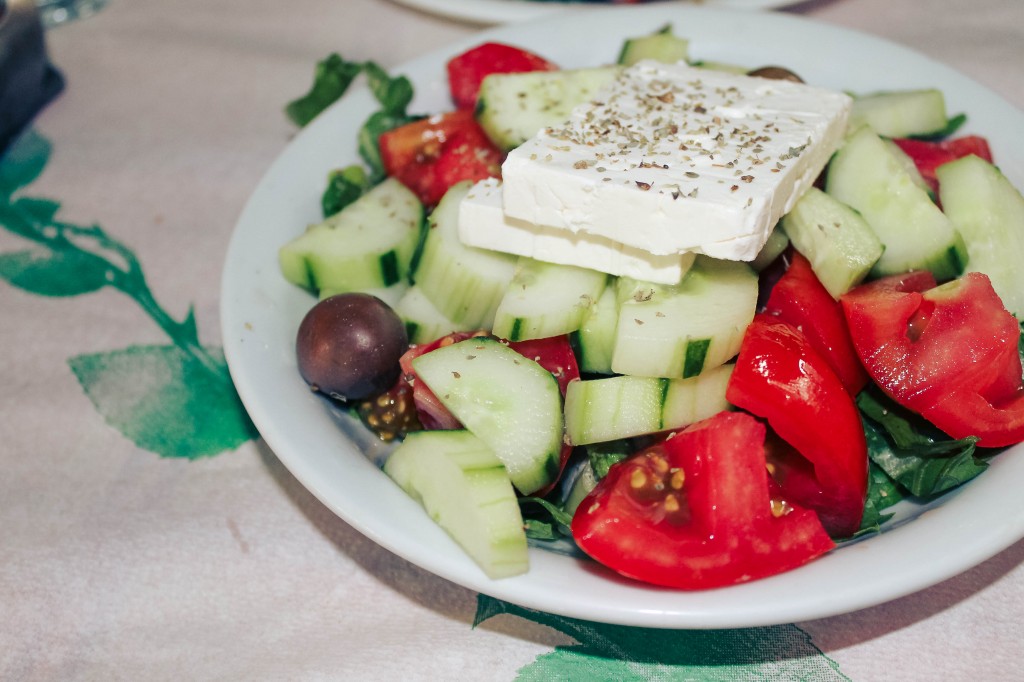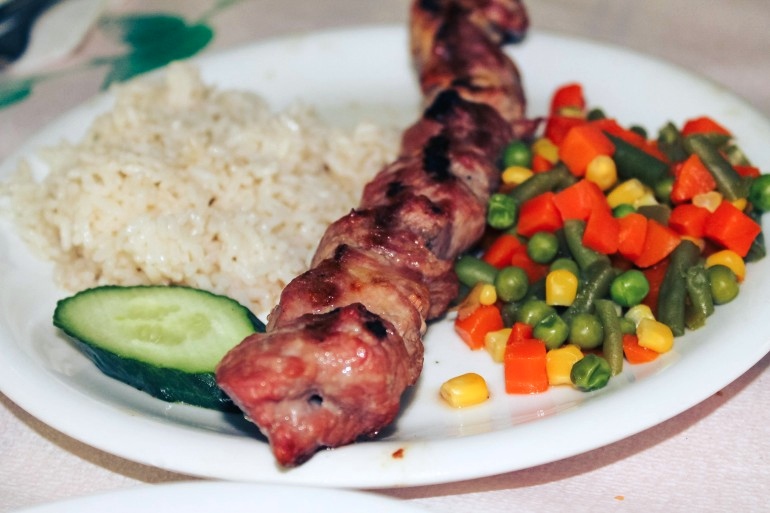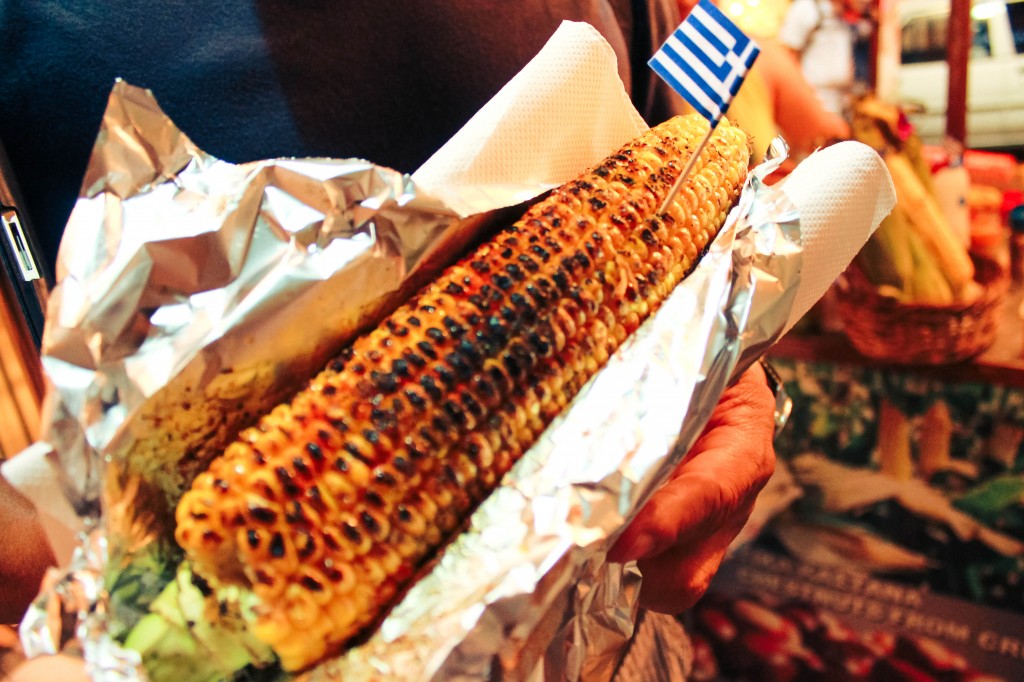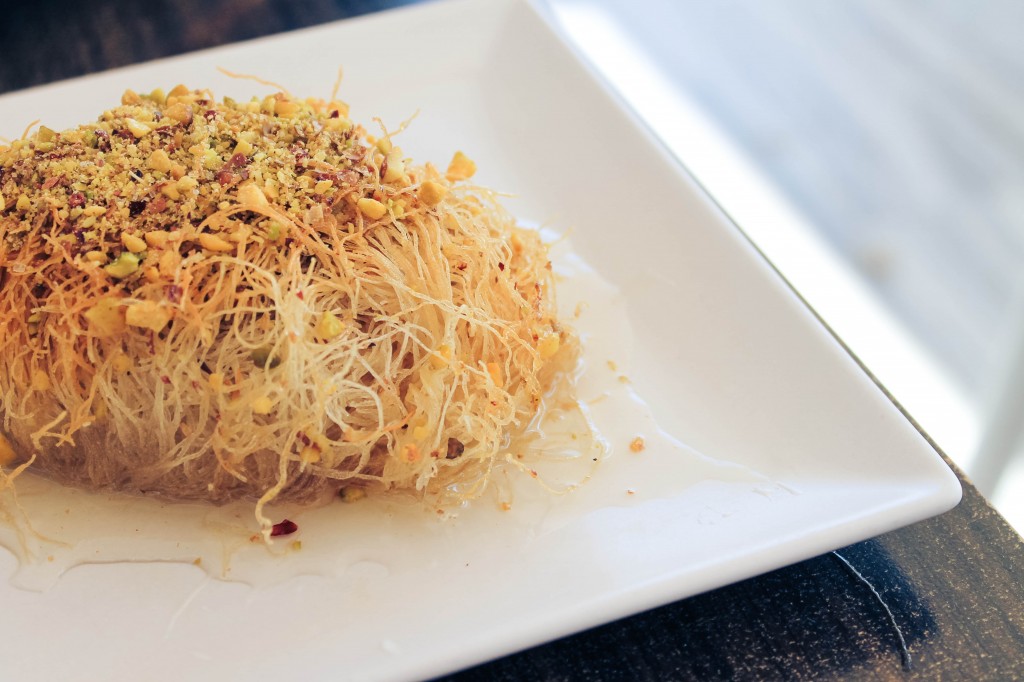This week I’ve had the pleasure of experiencing first-hand some of the local food favorites in Greece. Some dishes you may have heard of before while some perhaps not, but either way everything was mouthwateringly delicious; I’ll be sure to go back for seconds.
Greek Salad

Photo by Net Supatravanij
I’m not ashamed to say that this was my first stop on the seemingly never-ending food-packed journey. You have to try the Greek salad. Much to my surprise, the authentic kind didn’t come with all the ingredients I’m used to seeing. Instead of combining the tomatoes, sliced cucumbers, feta cheese, onions, olives and olive oil, my bowl was filled only with the first three items. Simple and hassle-free, it didn’t disappoint in the least; in fact, if anything, the lack of ingredients made Greece’s well-known tomatoes stand out in my mouth to give a sweet aftertaste. Have a go at making your own version of Greek salad with this recipe —if you want to, try leaving out the olives and onions for a simpler, yet tastier, salad.
Souvalaki

Photo by Net Supatravanij
In Athens, people were practically lining up all over the place just to get their hands on one of these. It’s their version of fast food essentially, and it’s really just meat on a stick. It’s easy to eat and pairs well with Greek style rice (pilaf), which I found to be particularly addicting; their lemon garlic rice costs less than normal packaged rice mixes so definitely follow this recipe here and try making your own.
Gyros

Photo by Net Supatravanij
As mentioned earlier, souvlaki is pretty much the center of all foods, and when sandwiched between pita bread, it’s one of the most popular ways to eat it. I was lucky enough to capture the entire process; starting as a thick log of meat roasted on a vertical spit, it gets shredded or grated, for lack of a better word, much like cheese. Toppings that are commonly added into the mix include tomatoes, onions and tzatziki sauce (Greek yogurt), which is used as a simple dipping sauce.
Corn on the cob (Greek style)

Photo by Net Supatravanij
Every country has a way spicing up (or down) the way they eat corn. Sold primarily through street vendors, their version of roasted corn is usually paired with either paprika (not to be confused with chili powder), butter, Greek sea salt and lemon. Naturally I ordered one and requested for all the toppings to be put on. The fact that you could practically taste all the condiments shows just how perfectly suited they are together; my personal favorite was paprika though.
Kataifi

Photo by Net Supatravanij
Forget baklava—this dessert is where it’s at. If you’ve got a super sweet tooth this is the perfect alternative ending to a meal you must try. It’s literally sugar on sugar in sugar. And some nuts. It may look like thin glass noodles weaved together in a ball of mystery, but it’s actually made from thin angel-hair like shredded wheat. The most common fillings for kataifi are almonds and walnuts, although a spoonful of pistachios never hurt nobody. After you’ve got the main part of the dessert down, the only thing left to do is drench it in sweet syrup—initially this was done to preserve them and keep it from drying out. This guide explains step by step how to make a homemade version.

